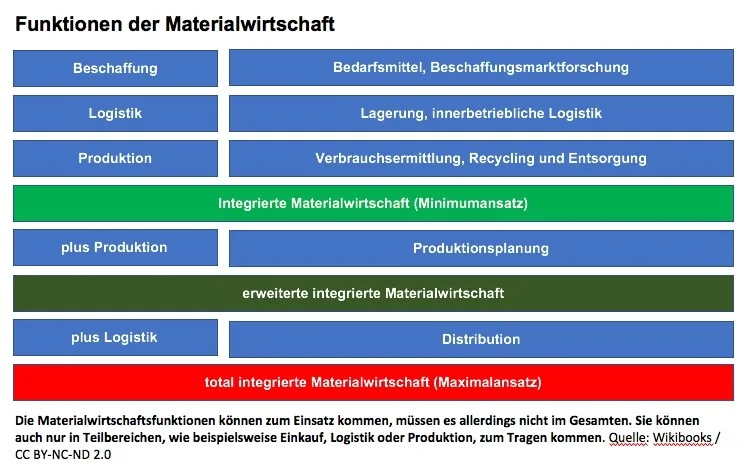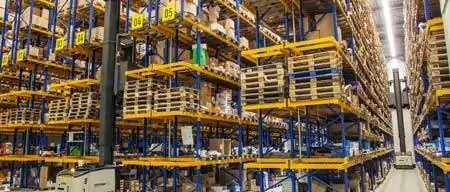Materials management in production and logistics
Materials management controls the flow of materials within a company and, for order-related reasons, at customers and suppliers. The focus here is usually on the business and commercial aspects. From a top-down view, it links all of a company’s commercial and technical infrastructures that affect the flow of goods in terms of time, quantity, quality and space.
The central tasks of materials management are the planning and control of the flow of goods between the company, suppliers and ultimately the customer. This also includes internal recipients or senders. The so-called internal consumers are, for example, the various departments within large companies, as well as the associated branch offices and subsidiaries (warehouse, production, sales). Materials management should not be confused with production management or production logistics.

The value chain is always in view
In professional circles, it is considered the central starting point from which the entire value chain can be controlled. There are three different types of objectives. The material objectives, formal objectives and environmental objectives are closely interlinked.
- Material objectives are usually requirements that enable the so-called formal objective to be achieved. They are of an economic nature and ultimately represent a company’s turnover and profit. For example, goods or materials are only provided in the required quantity. Storage location (transport costs), storage costs (warehouse efficiency) and product price are crucial and interdependent success factors.
- The social objectives are based on environmental protection and are therefore also highly regarded by society. On the one hand, companies in Europe are obliged to observe legal guidelines and regulations regarding recycling and disposal; on the other hand, it is now part of a good image to operate an environmentally friendly and thus low-emission materials management (lean production).
But energy efficiency is also an integral part of materials management today and ensures the good image mentioned above while at the same time promoting a positive formal goal. As a rule, social goals are subsidized by the state.
We distinguish between two segments in materials management:
- Production: In manufacturing companies, materials management focuses on issues related to the control and planning of the flow of raw materials and supplies.
- Distribution: By contrast, distribution relies on defined sales channels and direct contact with the end consumer (multi-channel, omni-channel, stationary trade) for its logistical activities via distribution centers. In contrast to production, finished products are distributed.
Nevertheless, there is no uniform definition of materials management. The areas of responsibility of the various companies and service providers are too different. In general, the following can be said:
The continuous flow of materials means that the necessary materials must be available in a certain, qualitatively flawless quantity at the right place and at the right time; for example, the milk run concept. This also includes office supplies that are needed for order processing.
Materials management summarized
Materials management deals with the planning and control of material flows within companies as well as with those of externally networked branch offices and suppliers involved. The so-called formal objective of achieving a high profit has priority in the end. Depending on the perspective, materials management takes on tasks in the sub-areas of procurement, production, logistics and intralogistics.
Further information on the subject of materials management can also be found under the definition of logistics and under merchandise management.
Teaserbild: Wollschlägergruppe / CC BY-SA 3.0
